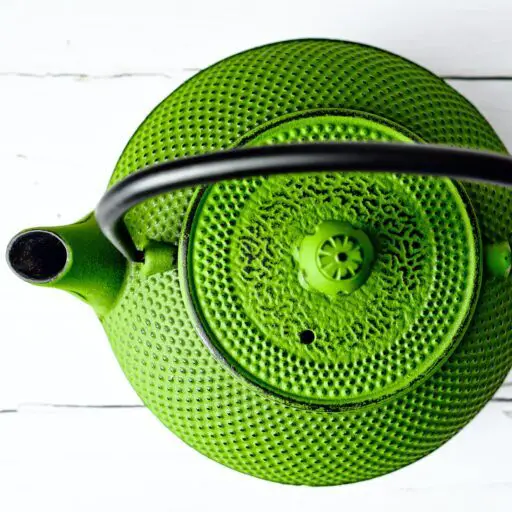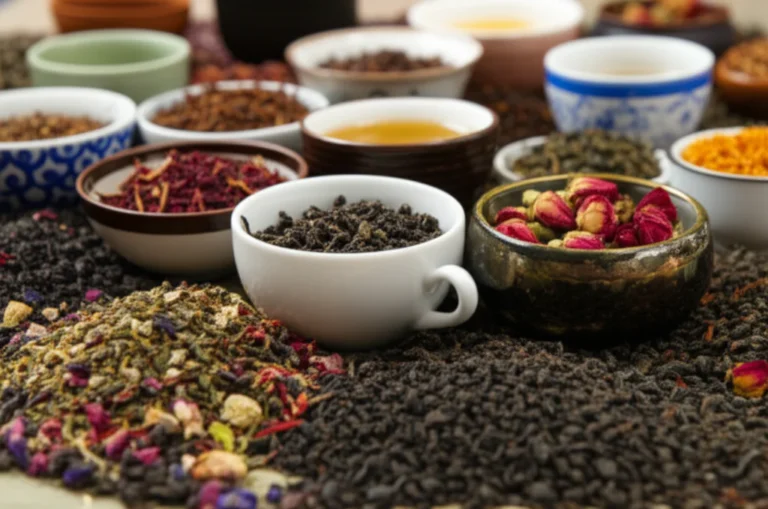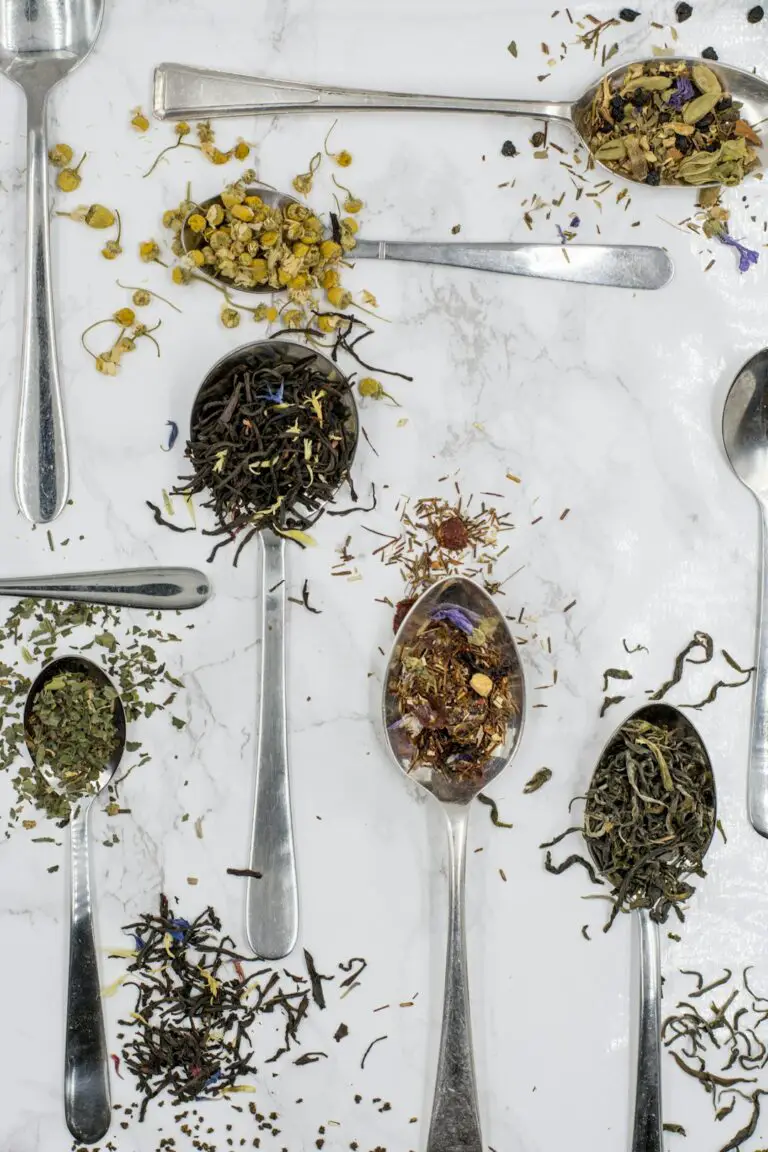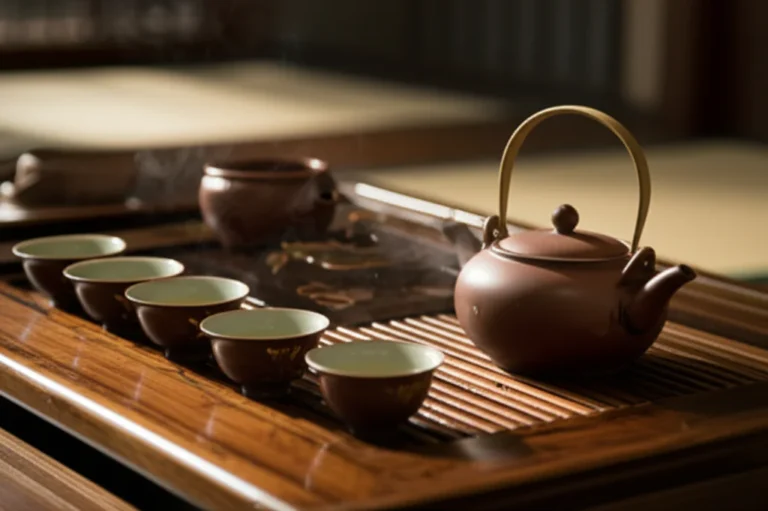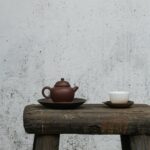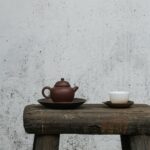Support our educational content for free when you purchase through links on our site. Learn more
Is Loose Leaf Tea Better for You Than Bagged? ☕️ (2025)
Have you ever wondered why tea aficionados rave about loose leaf tea while most of us just grab a bag from the box? Picture this: you’re at a cozy café, sipping a cup of freshly brewed loose leaf tea, and suddenly your taste buds dance with layers of flavor you never knew existed. Meanwhile, your office mate’s bagged tea tastes… well, a bit flat. What’s going on here? Is loose leaf tea really better for your health, or is it just a fancy trend?
In this article, we dive deep into the health benefits, flavor profiles, environmental impact, and cost comparisons between loose leaf and bagged teas. We’ll uncover surprising facts about antioxidants, brewing techniques, and even debunk common myths. By the end, you’ll know exactly why switching to loose leaf tea might just be the best decision you make for your wellness and your palate in 2025.
Key Takeaways
- Loose leaf tea preserves more antioxidants and nutrients than most bagged teas, thanks to larger, less processed leaves.
- Flavor is richer and more complex with loose leaf tea because the leaves have room to unfurl during brewing.
- Loose leaf tea is generally more eco-friendly with less packaging waste and compostable leaves.
- Bagged tea offers unmatched convenience but often at the expense of quality and health benefits.
- Proper brewing and storage are essential to maximize the benefits of loose leaf tea.
- Top brands like Harney & Sons, Rishi Tea, and Numi Organic offer excellent loose leaf options.
Ready to upgrade your tea ritual?
👉 Shop Loose Leaf Tea Brands:
Table of Contents
- ⚡️ Quick Tips and Facts
- The Great Tea Divide: A Brew-tiful History of Loose Leaf vs. Bagged Tea
- Unpacking the Health Benefits: Is Loose Leaf Tea Truly a Wellness Powerhouse?
- Flavor Fiesta: Why Your Taste Buds Will Thank You for Going Loose
- The Quality Conundrum: What’s Really Inside Your Tea Bag?
- Brewing Bliss: Mastering the Art of Loose Leaf Infusion
- Convenience vs. Craft: The Daily Grind of Bagged Tea vs. The Ritual of Loose Leaf
- Eco-Conscious Cuppa: Steeping Towards Sustainability with Loose Leaf
- The Cost Per Cup: Decoding the Value of Loose Leaf vs. Bagged Tea
- Beyond the Basics: Exploring Unique Loose Leaf Tea Varieties and Their Benefits
- Storage Secrets: Keeping Your Loose Leaf Tea Fresh and Flavorful
- Our Expert Picks: Top Loose Leaf Tea Brands We Swear By
- Common Myths Debunked: Separating Tea Fact from Fiction
- The Ultimate Tea Toolkit: Essential Accessories for Loose Leaf Lovers
- Conclusion: The Verdict is In!
- Recommended Links: Dive Deeper into the World of Tea
- FAQ: Your Most Pressing Tea Questions Answered
- Reference Links: Our Sources for a Smarter Steep
⚡️ Quick Tips and Facts
Welcome to the ultimate showdown: Loose Leaf Tea vs. Bagged Tea — is loose leaf really better for you? At Tea Brands™, where we sip and savor the finest teas daily, we’ve brewed up some quick facts to get you steeped in the essentials before diving deeper:
- ✅ Loose leaf tea uses whole or large pieces of leaves, preserving more antioxidants and flavor compounds.
- ❌ Bagged tea often contains fannings or dust — tiny leaf fragments that lose nutrients faster.
- ✅ Loose leaf tea allows leaves to unfurl fully during brewing, releasing richer flavors and more healthful polyphenols.
- ❌ Some tea bags are made with plastic or bleached paper, potentially leaching unwanted chemicals.
- ✅ Freshness matters! Loose leaf tea is often fresher, while bagged tea can sit on shelves longer.
- ✅ You can re-steep loose leaf tea multiple times, extracting more value and antioxidants.
- ❌ Bagged tea is undeniably convenient but may compromise quality and health benefits.
- ✅ Organic loose leaf teas reduce pesticide exposure.
- ✅ Proper storage (airtight, cool, dark) is key to preserving tea’s benefits.
Curious about how these facts translate into your daily cup? Keep reading — we’re just getting started! ☕️
The Great Tea Divide: A Brew-tiful History of Loose Leaf vs. Bagged Tea
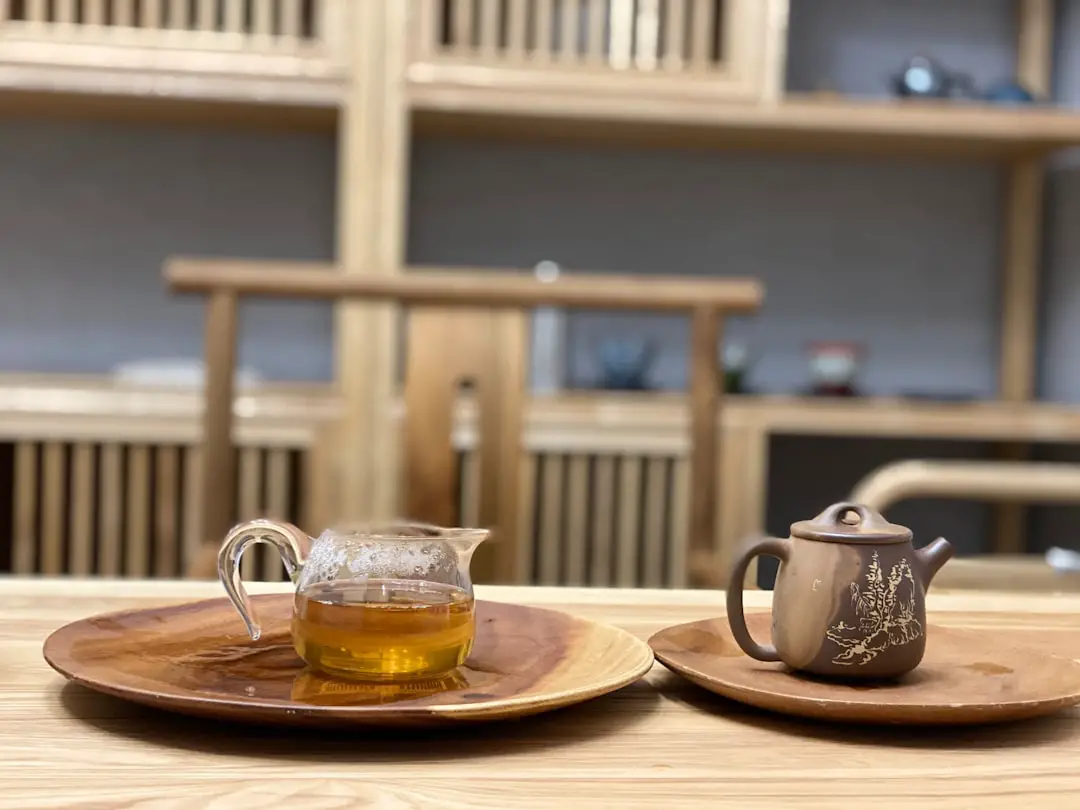
Before we spill the tea on health and flavor, let’s steep ourselves in history. Loose leaf tea has been the traditional way to enjoy tea for centuries, dating back to ancient China, where tea was hand-picked and carefully processed. The art of loose leaf tea is about celebrating the leaf’s integrity — whole leaves, buds, and carefully crafted blends.
Tea bags, on the other hand, are a 20th-century invention. Legend credits Thomas Sullivan, a New York tea merchant, who in 1908 sent samples in small silk bags. Customers brewed the tea with the bags intact, sparking the birth of the tea bag. Since then, tea bags have become synonymous with convenience and speed, especially in Western cultures.
But convenience often comes at a cost. Tea bags typically contain smaller leaf fragments — fannings and dust — which brew faster but sacrifice flavor and some health benefits. Plus, the bag material itself has evolved from silk to paper, nylon, or even plastic-infused fibers, raising questions about environmental impact and chemical leaching.
So, the history of loose leaf vs. bagged tea is a tale of tradition meeting modern convenience — but which wins the health and flavor crown? We’ll explore that next.
Unpacking the Health Benefits: Is Loose Leaf Tea Truly a Wellness Powerhouse?
The Science Behind the Leaves
At Tea Brands™, we geek out over the chemistry of tea. The health magic lies in polyphenols, especially catechins, which are antioxidants linked to reduced inflammation, heart health, and even cancer prevention. According to Columbia University’s health experts, whole loose leaves contain higher catechin concentrations than the broken leaf pieces in many tea bags.
Why? Because smaller leaf fragments have more surface area exposed to air and light, accelerating nutrient degradation. Plus, some catechins can get absorbed by the tea bag material itself, reducing what ends up in your cup.
Chewing the Leaves: A Hidden Bonus
If you’re a true tea lover, you might chew on your brewed leaves — a practice that delivers undissolved nutrients, fiber, and fat-soluble vitamins. This is only possible with loose leaf tea, obviously.
Organic and Freshness Factors
Organic loose leaf teas reduce pesticide exposure, and freshness is king. Fresh leaves smell vibrant and taste bright, while stale tea smells musty or smoky. Store your tea in airtight containers away from heat and light to preserve these benefits.
Bagged Tea’s Health Upside
Don’t write off bagged tea just yet. The smaller leaf particles can infuse nutrients more quickly, and some brands now use biodegradable, unbleached bags that minimize chemical leaching.
Flavor Fiesta: Why Your Taste Buds Will Thank You for Going Loose
The Flavor Explosion
Loose leaf tea is like a symphony of flavors — complex, nuanced, and evolving with each sip. Why? Because the leaves have room to unfurl fully during brewing, releasing essential oils and aromatic compounds.
Tea bags, packed tightly with tiny leaf fragments, restrict this expansion. The result? A bland, one-dimensional cup that rarely matches the depth of loose leaf.
Brewing Space Matters
Imagine trying to dance in a crowded elevator — that’s your tea leaves in a bag! Loose leaf teas get to stretch out in infusers or teapots, allowing water to circulate freely.
Real-World Taste Test
Our team at Tea Brands™ recently compared a popular bagged black tea with a loose leaf version from Harney & Sons. The loose leaf was richer, smoother, and had floral undertones missing in the bagged brew.
The Quality Conundrum: What’s Really Inside Your Tea Bag?
What Are Tea Bags Made Of?
Most tea bags are paper-based, but many contain polypropylene to seal the bag, making them non-biodegradable. Some brands use nylon or plastic mesh, which can release microplastics when brewed in hot water.
Tea Dust and Fannings
Tea bags often contain dust and fannings — the leftover tiny bits from tea processing. While these brew quickly, they lack the flavor complexity and health benefits of whole leaves.
Pyramid Sachets: A Middle Ground?
Brands like Artful Tea offer pyramid-shaped sachets with larger leaf pieces, allowing better infusion. Still, they usually don’t match loose leaf quality.
Brewing Bliss: Mastering the Art of Loose Leaf Infusion
Step-by-Step Brewing Guide
- Measure your tea: Use about 1 teaspoon (2-3 grams) per 8 oz cup.
- Heat your water: Different teas require different temperatures (e.g., 175°F for green, 212°F for black).
- Steep time: Usually 2-5 minutes depending on tea type.
- Use the right infuser: Mesh ball, basket, or teapot with strainer.
- Multiple steeps: Many loose leaf teas can be re-steeped 2-3 times, unlocking new flavor layers.
Pro Tips from Tea Brands™
- Avoid boiling water on delicate green or white teas to prevent bitterness.
- Experiment with steep times to find your perfect balance.
- Rinse your leaves with hot water before brewing for a cleaner taste.
Convenience vs. Craft: The Daily Grind of Bagged Tea vs. The Ritual of Loose Leaf
Convenience Wins with Tea Bags
No doubt, tea bags are speedy and mess-free — just dunk, steep, and toss. Perfect for busy mornings or office breaks.
The Ritual of Loose Leaf
Loose leaf tea invites you to slow down, savor the process, and connect with your cup. Many tea lovers find the ritual therapeutic — a mindful moment in a hectic day.
Which Fits Your Lifestyle?
- If you’re always on the go: ✅ Bagged tea.
- If you want a richer experience and don’t mind extra prep: ✅ Loose leaf tea.
Eco-Conscious Cuppa: Steeping Towards Sustainability with Loose Leaf
Waste Not, Want Not
Loose leaf tea generates less packaging waste than individually wrapped tea bags. Plus, spent leaves are compostable, enriching your garden soil.
Tea Bag Environmental Concerns
Many tea bags contain plastic and aren’t biodegradable, contributing to microplastic pollution. Brands like Pukka and Clipper offer fully compostable bags, but they’re still the minority.
The Cost Per Cup: Decoding the Value of Loose Leaf vs. Bagged Tea
| Aspect | Loose Leaf Tea | Bagged Tea |
|---|---|---|
| Upfront Cost | Higher (bulk purchase) | Lower (single-use packs) |
| Cost Per Cup | Lower (multiple steeps possible) | Higher (single steep only) |
| Quantity | Often sold in larger quantities | Sold in small, pre-measured bags |
| Waste | Less packaging waste | More packaging waste |
| Quality-to-Price | Better value for quality | Convenience premium |
Our Take
While loose leaf tea may seem pricier upfront, the cost per cup is often lower due to multiple infusions and less waste. Plus, you get a superior taste and health boost!
Beyond the Basics: Exploring Unique Loose Leaf Tea Varieties and Their Benefits
Tea Types to Try
- Green Tea: Rich in antioxidants, gentle caffeine.
- Oolong Tea: Semi-oxidized, complex flavor, metabolism booster.
- Pu-erh Tea: Fermented, aids digestion and cholesterol.
- White Tea: Least processed, delicate, high in antioxidants.
- Herbal Blends: Naturally caffeine-free, soothing.
Specialty Blends We Love
- Rishi Tea’s Jasmine Pearl — hand-rolled green tea with fresh jasmine blossoms.
- Teavana’s Youthberry — a fruity herbal blend packed with antioxidants.
Storage Secrets: Keeping Your Loose Leaf Tea Fresh and Flavorful
How to Store Loose Leaf Tea
- Use airtight containers — metal tins or dark glass jars.
- Keep in a cool, dark place away from heat, moisture, and odors.
- Avoid transparent containers exposed to sunlight.
- Don’t store near spices or strong-smelling foods.
Shelf Life
- Green and white teas: best within 6 months.
- Black and oolong teas: can last up to 2 years if stored properly.
Our Expert Picks: Top Loose Leaf Tea Brands We Swear By
| Brand | Design | Quality | Flavor | Health Benefits | Sustainability | Overall Score |
|---|---|---|---|---|---|---|
| Harney & Sons | 9 | 9 | 9 | 9 | 8 | 8.8 |
| Rishi Tea | 8 | 10 | 9 | 10 | 9 | 9.2 |
| Teavana | 7 | 8 | 8 | 8 | 7 | 7.6 |
| Artful Tea | 8 | 9 | 9 | 9 | 8 | 8.6 |
| Numi Organic | 8 | 9 | 8 | 10 | 10 | 9.0 |
Why We Love Them
- Harney & Sons: Classic, consistent, and widely available.
- Rishi Tea: Focus on organic, sustainable sourcing and vibrant flavors.
- Teavana: Great for beginners with accessible blends.
- Artful Tea: Artisan blends with a focus on quality and flavor.
- Numi Organic: Leading in organic and eco-friendly packaging.
👉 CHECK PRICE on:
- Harney & Sons Loose Leaf Tea on Amazon
- Rishi Tea Official Website
- Teavana Loose Leaf Tea on Amazon
- Artful Tea Official Website
- Numi Organic Tea on Amazon
Common Myths Debunked: Separating Tea Fact from Fiction
-
Myth: Tea bags always have more caffeine.
Fact: Caffeine depends on tea type, leaf size, and steep time. Sometimes bagged tea has more caffeine initially due to smaller leaf size, but loose leaf can be adjusted for strength. -
Myth: Loose leaf tea is too complicated for beginners.
Fact: With simple tools and a little practice, loose leaf brewing is easy and rewarding. -
Myth: All tea bags are bad for the environment.
Fact: Some brands now offer biodegradable, plastic-free tea bags. -
Myth: Tea bags contain harmful chemicals.
Fact: Most reputable brands use food-safe materials, but avoid bleached or plastic-infused bags if concerned.
The Ultimate Tea Toolkit: Essential Accessories for Loose Leaf Lovers
Must-Have Gear
- Infuser: Mesh ball or basket infuser for easy brewing.
- Teapot with Strainer: For multiple cups and elegant serving.
- Kettle with Temperature Control: Perfect water temperature every time.
- Tea Storage Containers: Airtight tins or jars.
- Tea Scoop: For precise measurement.
Bonus Gadgets
- Tea Timer: To avoid over-steeping.
- Matcha Whisk: For powdered green tea lovers.
- Travel Infuser Bottle: For tea on the go.
That’s a lot to sip on! Ready to find out which tea reigns supreme in our final verdict? Stay tuned for the conclusion where we spill the ultimate tea on loose leaf vs. bagged!
Conclusion: The Verdict is In!
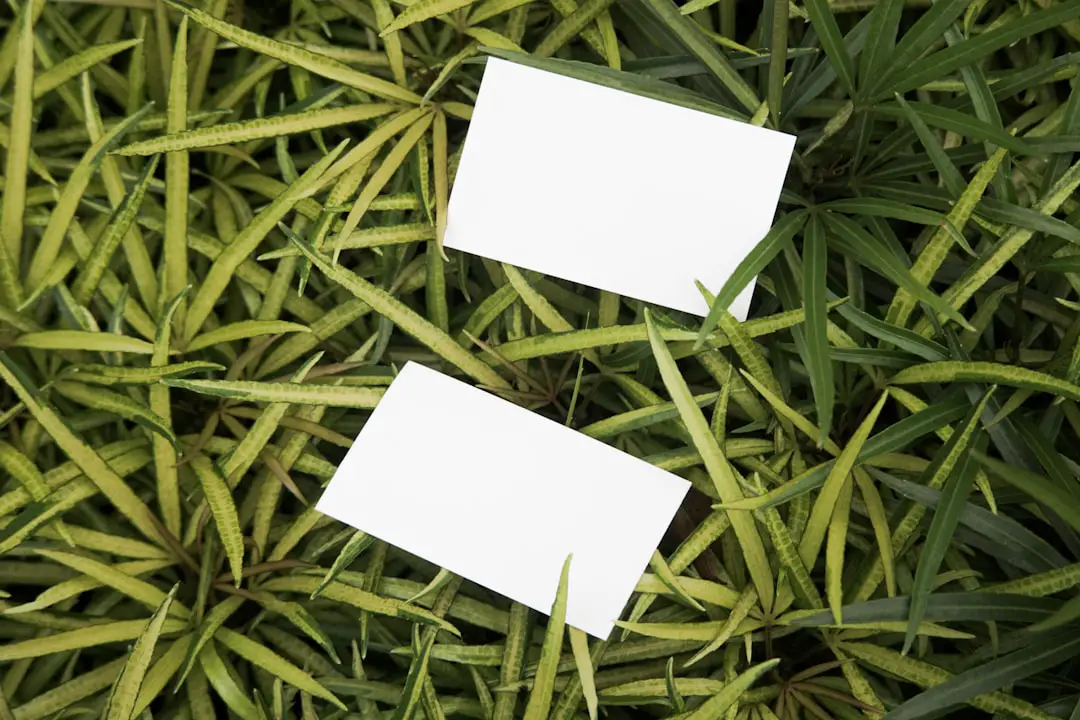
After steeping ourselves in the rich history, science, flavor profiles, and environmental impacts of loose leaf and bagged teas, here’s the bottom line from your expert tasters at Tea Brands™:
Loose leaf tea offers superior health benefits, thanks to its whole or large leaf pieces preserving more antioxidants like catechins. It delivers a richer, more complex flavor that tea bags simply can’t match due to their smaller leaf fragments and restricted brewing space. Plus, loose leaf tea is more sustainable and often more cost-effective per cup when you factor in multiple infusions.
That said, bagged tea shines in convenience and speed — perfect for busy mornings or office breaks. Some premium pyramid sachets even bridge the gap by using higher-quality leaves and biodegradable materials.
If you’re ready to elevate your tea game and savor every sip, we confidently recommend switching to loose leaf tea. Brands like Harney & Sons, Rishi Tea, and Numi Organic offer excellent options to get started. Remember, freshness, proper storage, and brewing technique are key to unlocking the full benefits.
So, is loose leaf tea better for you than bagged? The answer is a resounding yes — but the best tea is the one you enjoy. Ready to brew your perfect cup?
Recommended Links: Dive Deeper into the World of Tea
👉 Shop Loose Leaf Tea Brands:
- Harney & Sons: Amazon | Harney & Sons Official Website
- Rishi Tea: Amazon | Rishi Tea Official Website
- Numi Organic: Amazon | Numi Official Website
- Artful Tea: Amazon | Artful Tea Official Website
- Teavana: Amazon | Teavana Official Website
Must-Read Tea Books:
- The Tea Enthusiast’s Handbook by Mary Lou Heiss & Robert J. Heiss — Amazon
- The Art and Craft of Tea by Joseph Uhl — Amazon
- Tea: History, Terroirs, Varieties by Kevin Gascoyne et al. — Amazon
FAQ: Your Most Pressing Tea Questions Answered
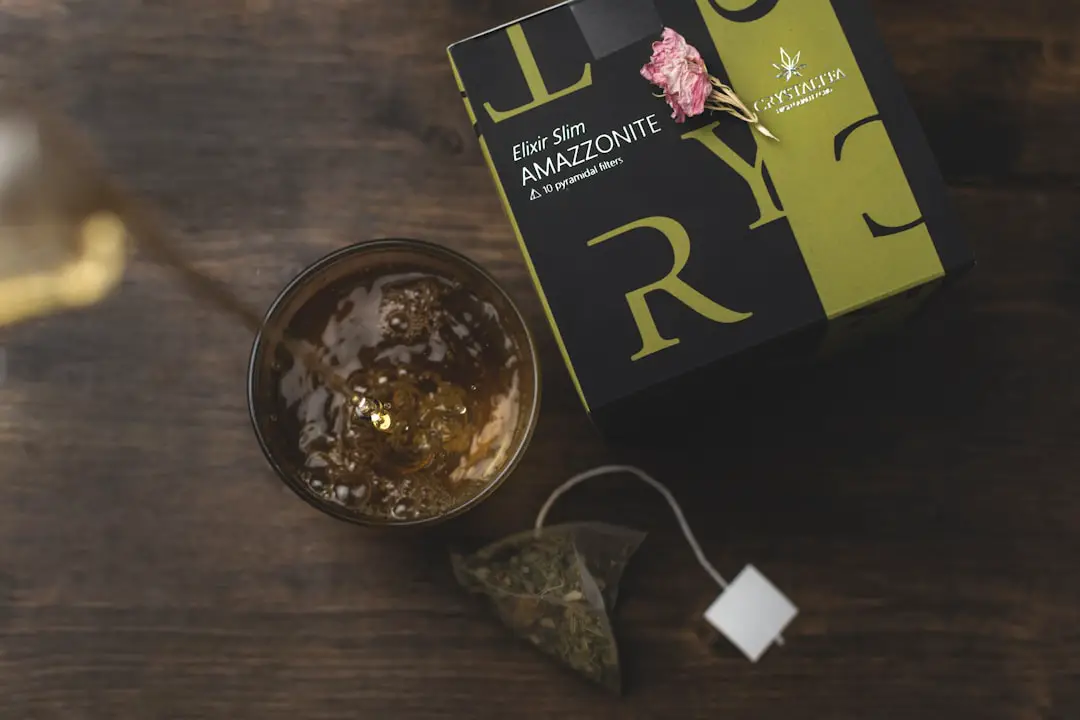
What are the health benefits of drinking loose leaf tea compared to bagged tea?
Loose leaf tea generally contains higher concentrations of antioxidants, such as catechins and polyphenols, because it uses whole or larger leaf pieces that retain more nutrients. Bagged teas often contain fannings and dust, which degrade faster and may lose some healthful compounds during processing and storage. Additionally, loose leaf tea allows for multiple infusions, providing repeated doses of beneficial compounds. According to Columbia University, consuming whole leaves or chewing them can also provide fiber and fat-soluble vitamins not present in bagged tea infusions.
Read more about “What Are the 10 Best Loose Leaf Teas for Health? 🍵 (2025)”
Do loose leaf teas have more antioxidants than bagged teas, and why is that important?
Yes, loose leaf teas typically have more antioxidants because the leaves are less processed and larger, which helps preserve catechins and other polyphenols. Antioxidants help neutralize free radicals in the body, reducing oxidative stress linked to aging, inflammation, and chronic diseases. The smaller leaf particles in tea bags have more surface area exposed to air and light, accelerating antioxidant degradation. Plus, some antioxidants may bind to the tea bag material, reducing their presence in your cup.
How does the brewing process differ between loose leaf and bagged tea, and which method yields a healthier cup?
Loose leaf tea requires a bit more attention: measuring, controlling water temperature, and steeping time. This careful brewing allows leaves to unfurl fully, maximizing extraction of flavor and nutrients. Bagged tea is convenient — just dunk and steep — but the tightly packed leaves have limited room to expand, which can restrict flavor and nutrient release. For the healthiest cup, brewing loose leaf tea with proper temperature and steep time is ideal. Using an infuser or teapot ensures even extraction and multiple steeps.
Are there any specific types of loose leaf tea that offer more health benefits than others, such as green tea or herbal blends?
Absolutely! Green tea is renowned for its high catechin content, especially epigallocatechin gallate (EGCG), linked to heart health and metabolism support. White tea is minimally processed and rich in antioxidants. Oolong tea offers a balance of antioxidants and metabolism-boosting compounds. Pu-erh tea is fermented, supporting digestion and cholesterol management. Herbal blends like chamomile or hibiscus provide unique benefits such as relaxation or blood pressure support but lack caffeine and traditional tea polyphenols. Choosing organic and fresh loose leaf varieties enhances these benefits further.
How can I tell if my loose leaf tea is fresh and high quality?
Fresh loose leaf tea smells vibrant and aromatic — think grassy, floral, or fruity notes depending on the type. Stale tea smells musty or smoky. The leaves should look whole or large, not powdery or dusty. Avoid tea that tastes bitter or flat. Store your tea in airtight containers away from heat, light, and moisture to maintain freshness.
Is loose leaf tea more environmentally friendly than bagged tea?
Generally, yes. Loose leaf tea produces less packaging waste, and spent leaves are compostable. Many tea bags contain plastic or polypropylene, which are not biodegradable and contribute to microplastic pollution. Some brands now offer fully compostable tea bags, but loose leaf remains the greener choice.
Read more about “Discover the 18 World Best Tea Brands You Must Try in 2025 🍃”
Reference Links: Our Sources for a Smarter Steep
- Columbia University – Bagged Tea or Loose Leaf Tea: Which is Better?
- Artful Tea – Loose Leaf vs Tea Bags
- Art of Tea – Loose Leaf Tea Vs. Tea Bags
- Harney & Sons Official Website
- Rishi Tea Official Website
- Numi Organic Tea Official Website
- Artful Tea Official Website
- Pukka Herbs – Sustainable Tea Bags
- Clipper Teas – Compostable Tea Bags
Ready to brew your best cup yet? Dive into the world of loose leaf tea and savor the difference! 🍵
